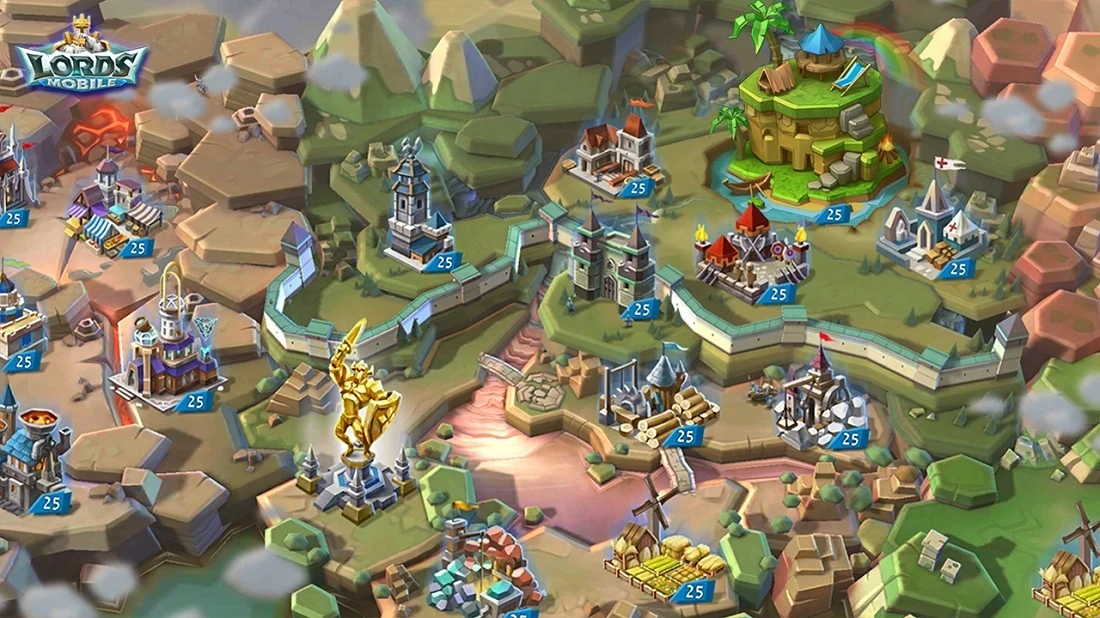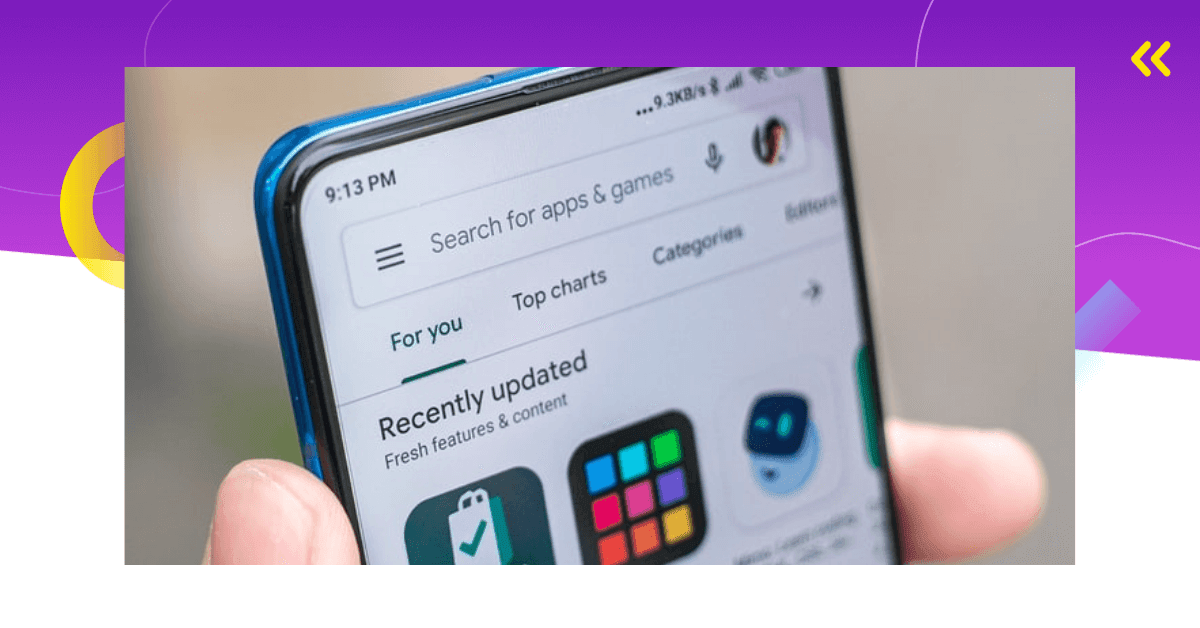Do you know what separates mobile games with millions of users from games that are played only by friends and family? Mobile game launch strategy.
How to soft launch your first mobile game? How to do a hard launch? What are the key steps to success? How to acquire users?
I’ve written a simple 5-step process to help you launch your first mobile game. Let’s dive in.

1. Set a Launch Date
Before you do anything, you should decide on a launch date. Mark it in your calendar.
Exciting, right?
Just like with anything else you plan; you need to have a clear deadline. Something to keep you on track. It will help you organize all your pre-launch activities and you’ll have a specific goal to strive for.
However, make sure that the date you have set is realistic. Otherwise, you’ll end up postponing the launch several times. That can negatively affect your marketing strategy.
So set a realistic launch date, try to stick to it, and plan everything around it. Otherwise, your launch strategy will water down, and the interest in your game will die off.

2. Do Some Research First
Research time!
There are a couple of things you should examine in order to create a killer mobile game launch strategy. Here are the most important ones:
Research Your Target Audience
The first thing is doing thorough target audience research. The success of any mobile game launch depends on it. You need to know who you want to target, where, and why. This is not something you should guess.
Granted, it might be challenging to define your target audience when you’re launching your first game ever. There’s no existing data to go by. However, identifying what makes your game special and what kind of people might want to play it is a great start.
Start by defining the obvious – the age, gender, and location of your target audience for both soft and hard launch. Then, get more specific, are you targeting a casual audience or perhaps a mid-core audience?
Go even further, define the interests and motivations of your target audience. For example, for some gamers, their main motivations for playing mobile games are the ability to express themselves and experience a wide range of emotions through storytelling. For others, the main motivations are achieving a high level of skill and being better than other players.
I’d also recommend using Facebook Audience Insights, a free tool by Facebook. It’ll allow you to take a deep dive into your target audience; what do they like, what device do they use, what pages have they liked, etc.
This data should help you form the initial customer avatar. It comes in very handy when making ads or deciding who to target.

Analyze Your Competitors
You don’t have to go a long way to grab your first win. Why try to reinvent the wheel?
Everything you need is already out there. Rather take a look at what your competition is doing. This is not something that will help you go big, but it’s a good way to get started.
When it comes to competitor intelligence — the market is crowded. There’s a solution and a source for any type of data or information you need.
How to know what you actually need?
The answer is simple – ad intelligence.
Let me explain.
You need to see what types of ads your competition is running, and where. Out of the free tools, one of the best options is provided by Facebook (again!). Facebook Ad Library enables you to see what kind of ads your competition is running.
When it comes to paid ad intelligence tools, SensorTower is a great one.
3. Start Building a Strong Online Presence
Building an online presence early, long before you launch the game, has many benefits.
Here’s why.
It allows you to create hype around your mobile game and start building a community that supports it. That way, when you finally launch, you’ll already have users that will download and play your game.

Create a Website for Your Mobile Game
The first step to building a presence online is creating a website for your mobile game. Even though you still haven’t launched the game, it’s important to have a way to showcase it and announce the launch. The website doesn’t require special animations and expensive artwork, but it does require a professional look. It should be simple to navigate and use.
Here’s what a mobile game landing page should include:
- Game trailer
- Screenshots
- Launch date announcement
- Attention-grabbing copy and game description
- Social media buttons
- News and updates
- Call to action
- Newsletter subscribe button
- App store links (after you launch the game)

Start Posting on Social Media
The key thing for a successful launch strategy is to create a hype around your game and get noticed in this crowded market. Social media is the best way to do that – it’s where the people are.
But which social media networks you should be on?
I recommend:
- TikTok
Regarding TikTok, this is a social media network that’s rapidly growing in popularity. It’s particularly great for promoting mobile games. That’s due to the fact that it’s populated by a young Gen Z audience. Plus, it’s a video platform which lends itself well to showcasing mobile games.

Be Active in Gaming Communities
Along with social media, you should also be active in different gaming communities. Not just to blatantly promote your game, but to create real relationships with likeminded people.
Reddit is a platform that attracts a lot of gamers and developers, which makes it the perfect place to connect with the community.
However, Reddit has strict rules for promoting your stuff. There’s a 1:10 ratio when it comes to self-promotion so make sure you follow that. Otherwise, you’ll get banned or other users will destroy you and you won’t be able to show your face on Reddit ever again.
Furthermore, many gaming communities can be found on forums, Discord, and gaming websites, even in the comment sections. Of course, the most important thing is to find a niche that fits you, whichever community you end up choosing.
But, same as with every other way of self-promotion, make sure to read the platform rules.
Besides forums, there are a lot of other mobile gaming communities that you can be a part of. Many of them are on Facebook.
Here’s a list of some of the most active Facebook Groups related to mobile games:
- Mobile Entrepreneurs
- Indie Game Developers
- Mobile Game Developers
- Indie Game Chat
- Indie Game Promo
Collect Emails
As you establish connections in the gaming industry, make sure to collect emails. You should also encourage people to subscribe to your newsletter – that’s why it’s a smart idea to include it on your website.
Here’s why it’s important to collect emails early on.
If you already have a decent subscriber list before the launch, you can announce the launch to a lot of people and immediately convert them to users.

4. Create a Killer Soft Launch Strategy
A soft launch is an important step you should not skip. It allows you to split test everything like game design, user retention, monetization methods, and even marketing strategies.
Here’s the main difference between a soft launch a hard launch.
You can look at a hard launch as a big push over a short period of time (i.e. a weekend or a week). During that time, you spend heavily on paid ads and try to make a big splash in the market.
A soft launch happens on a much smaller scale and its main purpose is to test your mobile game and make different updates.
What’s important for soft launch is to choose countries that are culturally the most similar to your target market. That ensures you get the most accurate results. For example, game studios who look for users similar to American users often soft launch in countries like Canada, the Netherlands, Sweden, and Ireland.
But here’s the kicker.
Keep in mind that you should not spend a lot of money on advertising during the soft launch. During this time, you’re still testing your mobile game, so it doesn’t make sense to spend tens of thousands of dollars just yet. That should be reserved for a hard launch.
Make Necessary Changes to Your Mobile Game Before the Hard Launch
During the soft launch, you’ll get a lot of data on many different aspects of your game. The key is to analyze the data correctly in order to identify what you need to change.
For example, you might notice the user retention rate is very low during the soft launch. That’s a common issue – only 15% of mobile games manage to retain 15% of users after the first day. What you need to do is identify why and make changes accordingly.
Only when you have solved all the issues with your mobile game and made it as perfect as it could be can you move on to the next step – launching your game globally.
That brings us to the next step.

5. Hard Launch: Time to Release
So you’ve fixed all the issues you identified during the soft launch. You now have a finished product that’s ready for a hard launch. Everything is polished and ready to go.
This is the moment you have been waiting for.
It’s time to release your game globally (or to your target market).
Here’s what you need to do during the hard launch.
Make the Announcement on All Channels
Now it’s time to announce the launch everywhere – your website, social media pages, email list, etc.
Let the world know!
This is one of the reasons why I advise you to build an online presence before the launch. This way, you have a ready audience and different channels you can announce it on.
But, make sure you know how to form your announcement well. Build up the hype about your game, be excited about it!
Make sure to create different posts for each channel, so your announcement doesn’t look like it was a result of a copy-paste action. The posts don’t need to be wildly different, but you should still alter them just enough so they are appropriate for different channels.
For example, if you are announcing your game on an Instagram post or a story, make sure to include some stunning visuals with it. If you are posting it on TikTok, alter your announcement to cater to younger audiences.
When it comes to Twitter, don’t forget your hashtags. And, of course, make sure to include a call-to-action on each and every one of your channels.
Create a Press Kit
Before you contact bloggers or ask for reviews, you need to have a press kit ready to go.
You’re probably wondering, what to include in the press kit?
Well, anything that will help journalists or influencers understand your mobile game. That includes basic information like the release date, price, supported platforms, contact information, social media, and website links.
You will also need a short description of your mobile game, trailer, gameplay video, screenshots, icons, and reviews (if you have any).
It’s a good idea to post the press kit on your website for easy access.

Contact the Press and Bloggers
When you have your press kit ready, you can start contacting the press, bloggers, influencers, etc. The goal is to get your mobile game featured or reviewed.
Granted, that’s not easy if this is your first mobile game. It’s hard to get the attention of bloggers, especially when you’re asking for a free review.
However, if you stay persistent and learn how to make a good pitch, you’ll definitely get some attention. The more people you contact the bigger the chances you’ll get a positive response. So don’t give up.
Here are some great mobile game review sites you can contact right now:
- AppBrain
- Appolicious
- AppAdvice
- FeedMyApp
- Mashable
- TechCrunch
- 148apps
- PocketGamer
- Reviewlancer
- Product Hunt
- The Startup Pitch
If you need more info, check out our article on how to get your app reviewed.
Use Paid Ad Campaigns to Boost the Launch
As it was mentioned before, you should go heavy on advertising during the hard launch. That includes creating paid ad campaigns to really make an impact. Organic reach can only get you so far.
At this point, take what you have learned from the soft launch phase and allocate your budget across different channels. Think about who your target audience is and where you should place your game ads. In this phase, you don’t want to focus on one ad network only. Make sure to test your performance over several game ad networks with different app campaign options. The most common places to start with paid campaigns are Google and Facebook. You can also try out the top gaming ad networks like Applovin, Unity Ads, and ironSource.
Furthermore, the best ad format for mobile games is video. With this format, you can display your game’s most exciting features and give them a glimpse of your game. Creating a memorable video ad for your game could seriously boost your install rates.
The best strategy is to create video ads based on specific gamer motivations we’ve mentioned earlier. Furthermore, make sure to demonstrate all the main game features and benefits. Additionally, make sure to include actual gameplay footage in video ads. You can use some cinematic scenes, but sparingly. Gameplay footage is what represents a game in a truthful way. Plus, you’ll avoid players being disappointed once they download the game. (That happens often when publishers use cinematic scenes and other misleading advertising techniques to acquire users).
For tips on how to create awesome video ads, go here.
Finally, track which channels are giving you most in return. You will find this out by tracking the following metrics: number of installs, cost per install, and in-app purchases. After that stick to testing, learning and further optimizing your paid campaigns.
Mobile Game Launch Strategy: Next Steps
Your work is not done. After you launch your first mobile game, you must continue to improve on it and promote it consistently. That’s the quickest path to success.
Now we want to hear what you have to say!
What do you think is the biggest challenge when it comes to mobile game launch strategy?
Tell me in the comments below.
Don’t forget to subscribe to our newsletter to get the latest updates from the mobile gaming industry!







Comments